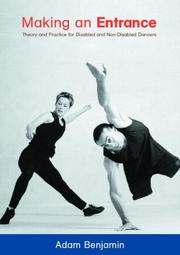| Listing 1 - 3 of 3 |
Sort by
|
Book
ISBN: 3846752177 Year: 2011 Publisher: Paderborn : Wilhelm Fink Verlag,
Abstract | Keywords | Export | Availability | Bookmark
 Loading...
Loading...Choose an application
- Reference Manager
- EndNote
- RefWorks (Direct export to RefWorks)
Künstler arbeiten ständig an der manifesten Fortentwicklung der Kunst. Theoretiker und Kritiker arbeiten am Zukünftigen höchstens als deren Begleiter. Bringt man Künstler und Theoretiker aber miteinander ins Gespräch, eröffnet sich eine erhellende Perspektive auf die Kunst und ihre Rezeption. Ein Kind lässt einen Stein übers Wasser springen präsentiert die Ergebnisse eines Forschungsprojektes, in dem Volkmar Mühleis fünf Künstler über drei Jahre hinweg immer wieder zu ihrem Selbstverständnis und ihrer Arbeitsweise befragte: Parastou Forouhar, Michaela Melián, Maurice van Tellingen, Wim Catrysse und Angelo Vermeulen gaben Auskunft und diskutierten mit der Kunsthistorikerin Annie Reniers und dem Philosophen Herman Parret. Die Antworten der Künstler konfrontiert Mühleis mit einer genealogischen Theorie der Kunst und gewinnt daraus neue Erkenntnisse über Fähigkeiten und Aufgaben der Kunstphilosophie. Dabei wird deutlich, dass die Aufgabe der Kunsttheorie nicht allein der Rückblick auf die Kunstgeschichte sein kann. Ihre größte Herausforderung besteht darin, die Entwicklungen der Gegenwartskunst im Werden zu deuten. Doch das wird den Kunsttheoretikern nur gelingen, wenn sie eine genealogische Theorie zur Beschreibung der Kunstpraxis entwickeln können.
Art --- Aesthetics. --- Dancers --- Dancers with disabilities. --- Self-perception. --- Philosophy.
Book
ISBN: 9783942449427 3942449420 Year: 2012 Publisher: Berlin : Theater der Zeit,
Abstract | Keywords | Export | Availability | Bookmark
 Loading...
Loading...Choose an application
- Reference Manager
- EndNote
- RefWorks (Direct export to RefWorks)
People with disabilities and the performing arts --- Actors with disabilities --- Dancers with disabilities --- Theater and society --- Performing arts --- Reality in art --- Actors with disabilities. --- Dancers with disabilities. --- People with disabilities and the performing arts. --- Reality in art. --- Theater and society. --- Anthropological aspects --- Anthropological aspects.

ISBN: 0415251435 0415251443 Year: 2002 Publisher: London Routledge
Abstract | Keywords | Export | Availability | Bookmark
 Loading...
Loading...Choose an application
- Reference Manager
- EndNote
- RefWorks (Direct export to RefWorks)
Making an Entrance is the first ever practical introduction to teaching dance with disabled and non disabled students. This clearly written, thought provoking and hugely enjoyable manual is essential reading whether you're just starting out or are already active in the field. Taking improvisation as his focus and as the starting point of choreographic exploration, Adam Benjamin asks what it has to offer as an art form and how it can be better used to meet the changing needs of dance education. In the theoretical section Benjamin explores the history of a disintegrated dance practice, placing it within the wider context of cultural and political movements. He questions what is meant today when we talk about 'inclusive' or 'integrated dance' and what we might expect of it. The book includes over 50 exercises and improvisations designed to stimulate and challenge students at all levels of dance. Benjamin also includes useful hints on the practicalities of setting up workshops covering issues as diverse a class size, the safety aspects of wheelchairs and the accessibility of dance spaces.
Dance. --- Dancers with disabilities --- Dance --- Danse --- Danseurs handicapés --- Social aspects. --- Aspect social --- Dans --- Danskunst --- Dansante vorming --- Gehandicapten --- Improvisatie --- Integratie --- Inclusie --- Dansvoorstelling --- Rolstoelgebruikers --- Democratisering van het onderwijs --- Buitengewoon onderwijs --- Inclusief onderwijs --- Sociale integratie --- #SBIB:316.8H22 --- #SBIB:39A9 --- Dance and society --- Dancing and society --- Society and dance --- Disabled dancers --- People with disabilities --- Dances --- Dancing --- Amusements --- Performing arts --- Balls (Parties) --- Eurythmics --- Social aspects --- Welzijnsorganisatie: sociale dienstverlening voor specifieke groepen --- Medische antropologie / gezondheid / handicaps --- Theatrical science --- Recreation. Games. Sports. Corp. expression --- dansen --- danstechniek --- personen met een beperking --- anatomie --- lichaamsbeweging --- dansexpressie --- Dansen --- Persoon met een handicap --- Rolstoelgebruiker --- Democratisch onderwijs --- Digitale kloof --- ouder --- Ondersteuning --- Samenleving --- Persoon met een verstandelijke handicap --- Oudere --- Gemeenschap --- School --- Buurt
| Listing 1 - 3 of 3 |
Sort by
|

 Search
Search Feedback
Feedback About UniCat
About UniCat  Help
Help News
News